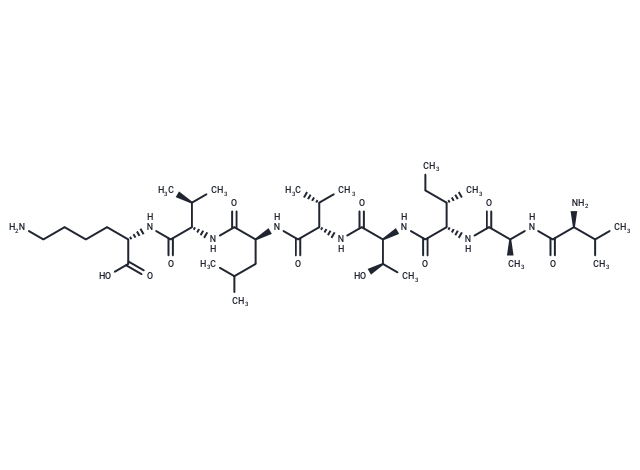Shopping Cart
- Remove All
 Your shopping cart is currently empty
Your shopping cart is currently empty
Cell-permeable calmodulin (CaM) agonist that binds to the EF-hand/Ca2+-binding site; produces CaM-dependent activation of phosphodiesterase. Also binds to cytoplasmic sites on other Ca2+ channels, including NMDA and HIV-1 gp120-activated channels, inhibiting Ca2+-mediated cytotoxicity and apoptosis (IC50 = 52 μM). Shown to protect pancreatic acinar cells from gossypol induced necrosis. Inhibits VLA-5-mediated adhesion of mast cells to fibronectin in vitro and attenuates inflammatory cell influx in guinea pig lung in vivo.

| Pack Size | Price | Availability | Quantity |
|---|---|---|---|
| 1 mg | $170 | Backorder |
| Description | Cell-permeable calmodulin (CaM) agonist that binds to the EF-hand/Ca2+-binding site; produces CaM-dependent activation of phosphodiesterase. Also binds to cytoplasmic sites on other Ca2+ channels, including NMDA and HIV-1 gp120-activated channels, inhibiting Ca2+-mediated cytotoxicity and apoptosis (IC50 = 52 μM). Shown to protect pancreatic acinar cells from gossypol induced necrosis. Inhibits VLA-5-mediated adhesion of mast cells to fibronectin in vitro and attenuates inflammatory cell influx in guinea pig lung in vivo. |
| Molecular Weight | 842.09 |
| Formula | C40H75N9O10 |
| Cas No. | 145224-99-3 |
| Relative Density. | no data available |
| Sequence | Val-Ala-Ile-Thr-Val-Leu-Val-Lys |
| Sequence Short | VAITVLVK |
| Storage | keep away from moisture | Powder: -20°C for 3 years | In solvent: -80°C for 1 year | Shipping with blue ice/Shipping at ambient temperature. | ||||||||||
| Solubility Information | H2O: 1 mg/mL (1.19 mM), Sonication is recommended. | ||||||||||
Solution Preparation Table | |||||||||||
H2O
| |||||||||||

Copyright © 2015-2025 TargetMol Chemicals Inc. All Rights Reserved.